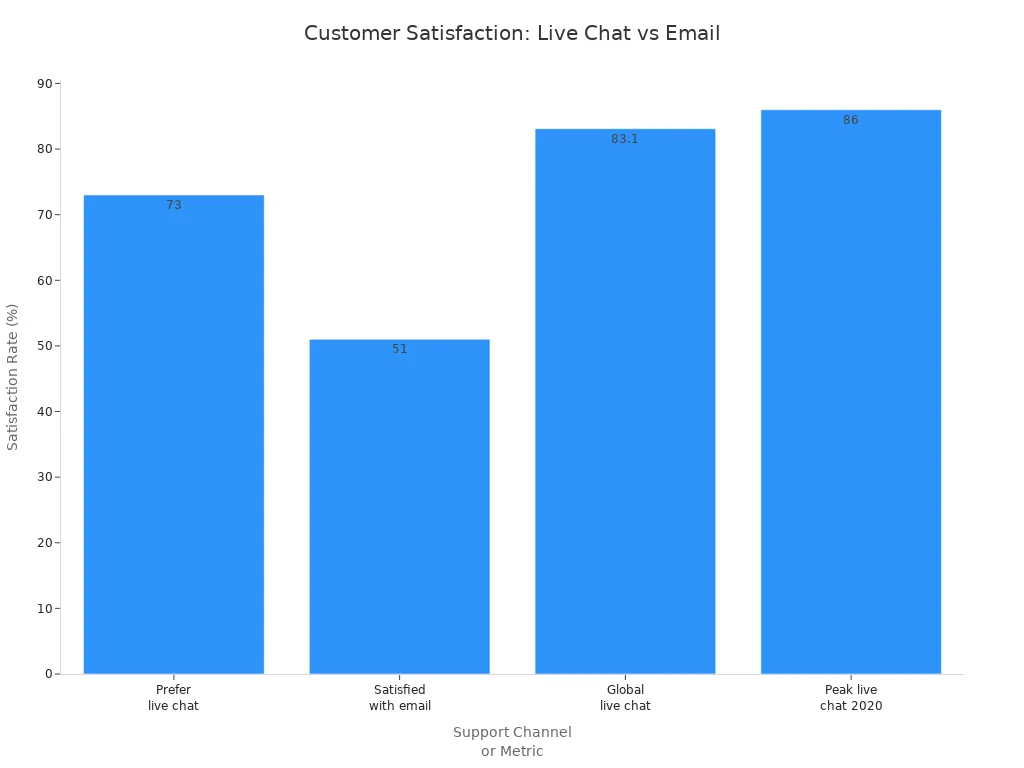Is Live Chat the Best Customer Tool Compared to Others

Imagine a retail store during a holiday sale. Hundreds of customers reach out at once. Some want answers fast, others need detailed help. Businesses must select the right channel for customer communication. Live chat support stands out as the top choice for many, thanks to its speed, immediate responses, and high satisfaction rates—85% customer satisfaction compared to 61% for email and 44% for phone. Sobot, a leader in omnichannel solutions, helps companies unify live chat, Sobot AI, Sobot call center, and chatbots for seamless customer support. Companies compare live chat, email, phone, messaging, and chatbots based on key factors:
- Speed and real-time answers
- Personalization and empathy
- Scalability and cost
- Complexity of customer needs
- Customer satisfaction and loyalty
The definition of live chat continues to evolve as customer demands increase and Sobot’s technology makes instant, personalized support possible.
Definition of Live Chat

What Is Live Chat?
The definition of live chat centers on real-time communication between businesses and customers. Live chat works as a digital-first customer service channel. It appears as a chat window on a website, allowing direct interaction with support agents. This tool stands out because it gives instant answers, making it different from email or phone support. Real-time interaction means customers do not wait long for help. They get answers while browsing, which helps them make decisions faster.
Live chat offers several benefits:
- Real-time messaging lets customers ask questions and get answers right away.
- Website integration makes it easy for visitors to start a chat without leaving the page.
- Real-time customer service builds trust and loyalty because customers feel heard.
- Businesses can collect feedback and improve their services using chat transcripts.
- Real-time communication supports file sharing, chat transfer, and multiple chat windows.
Many customers prefer live chat because it is fast and easy to use. According to recent surveys, 73% of customers choose live chat over phone or email. The average response time is just 15 seconds, which is much faster than other channels. This speed helps reduce cart abandonment and increases conversion rates. Source
Sobot Live Chat Features
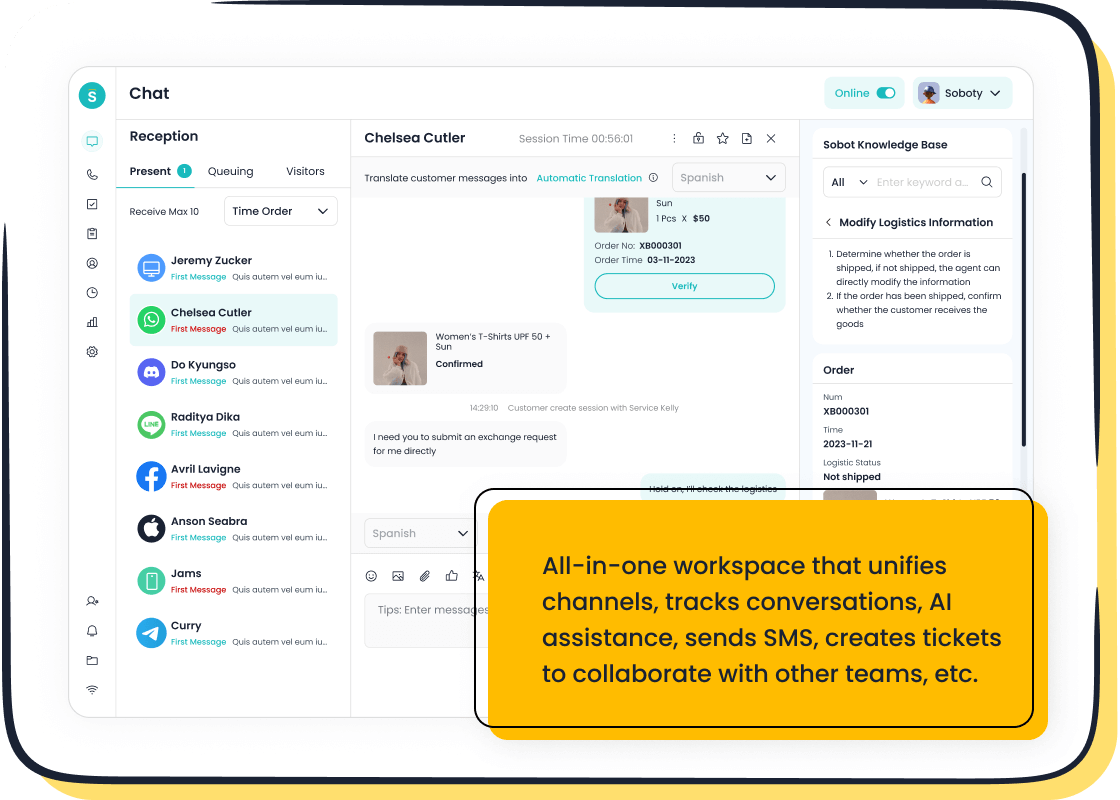
Sobot Live Chat takes the definition of live chat further by offering advanced features for modern businesses. Sobot provides omnichannel support, which means customers can reach out through websites, apps, or social media platforms like WhatsApp and Facebook. This ensures a consistent experience across all channels.
Key features of Sobot Live Chat include:
- Real-time communication across multiple platforms, supporting over 50 languages.
- AI-powered tools that analyze customer data and predict needs, making each chat more personal.
- CRM integration and website integration, so agents see customer history and provide better service.
- A unified workspace where agents manage all chats, tickets, and messages in one place.
- Real-time analysis and reporting, helping businesses track performance and improve service.
- CRM tools that connect with other business systems, making collaboration easier.
- Real-time chatbots that handle simple questions, freeing agents for complex issues.
- Customizable chat widgets that match the brand’s look and feel.
Sobot’s real-time communication tools help businesses respond quickly and keep customers happy. The platform’s CRM integration and AI features boost efficiency and allow for proactive support. Sobot Live Chat also supports real-time feedback, helping companies refine their customer service strategies. With these features, Sobot delivers a complete solution for real-time customer service and engagement.
Live Chat Support vs Email
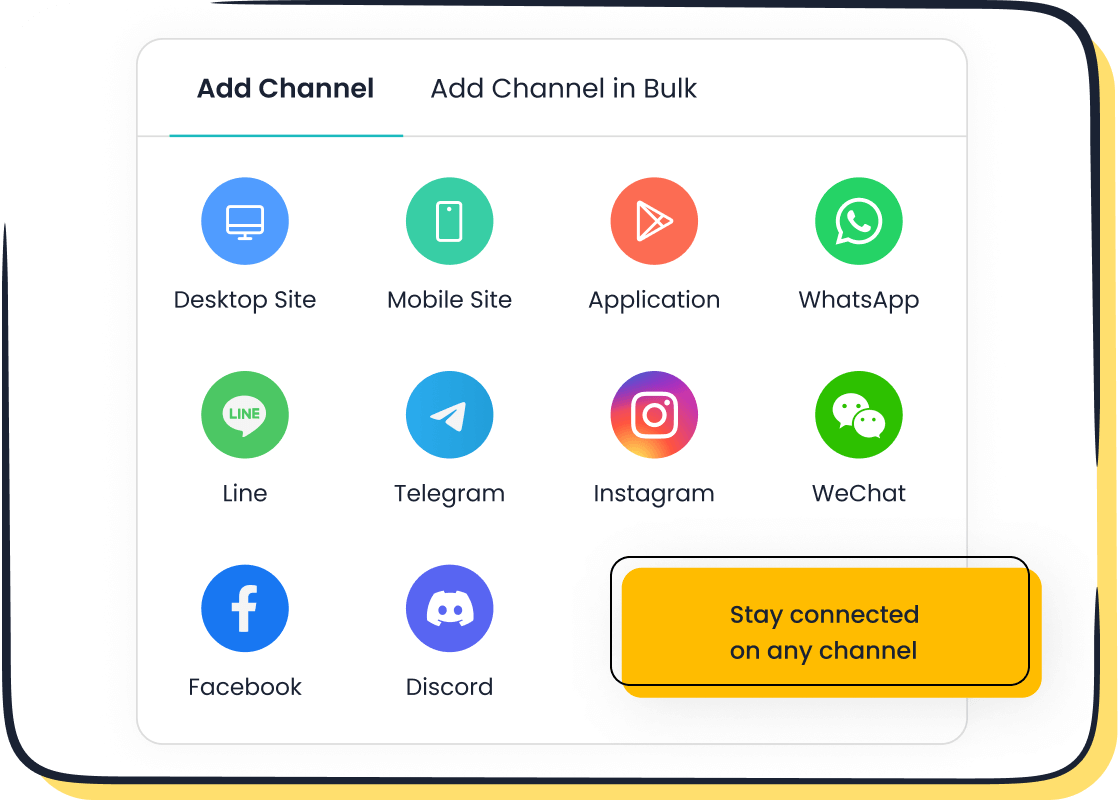
Speed and Response Time
Speed matters in customer support. Live chat support gives customers real-time answers. Most companies reply in under 30 seconds. This quick response helps customers feel valued and keeps them engaged. In contrast, email support often takes hours. The average response time for live chat is about 1 minute and 35 seconds, while email averages 3 hours and 30 minutes. Fast replies in live chat support reduce frustration and prevent customers from leaving. Sobot’s analytics help businesses track these response times and improve their service.
| Support Channel | Average Response Time |
|---|---|
| Live Chat | Approximately 1 minute 35 seconds |
| Approximately 3 hours 30 minutes |
Personalization for Customers
Live chat support allows agents to see customer history and provide personalized customer interactions. Agents can greet customers by name and offer solutions based on past conversations. This real-time connection builds trust and improves the customer experience. Sobot’s live chat support integrates with CRM systems, so agents have all the information they need in one place. Email support can also be personal, but it lacks the instant feedback and quick responses that live chat support provides. Customers often prefer live chat support because it feels more like a conversation.
Note: Live chat support achieves a 73% customer satisfaction rate, while email support reaches only 51%.
When to Use Email
Email support works best for detailed questions or when customers need to send documents. Some customers prefer email for complex issues that require longer explanations. Email support also helps when customers do not need real-time answers. Sobot’s unified workspace lets agents manage both live chat support and email support together. This approach ensures no customer request gets missed and improves overall service quality. Businesses can use analytics from Sobot to decide when to use each support channel for the best customer service.
Live Chat vs Phone Support
Handling Complex Issues
Live chat and phone support both help customers solve problems, but they work best for different types of issues. Phone support gives customers a personal, one-to-one connection. Agents can hear the customer’s tone and emotion, which helps them understand the problem better. This makes phone support strong for complex issues that need careful listening and quick thinking. Customers often get faster solutions for difficult problems over the phone.
Live chat works well for simple questions or when customers want quick answers. Agents can handle several chats at once, but this can slow down responses for complex problems. Live chat is not as good at solving deep or tricky issues because it lacks the personal touch of a voice conversation. Companies with many complex questions often choose phone support, while those with lots of simple requests prefer live chat.
- Phone support captures tone and emotion for better communication.
- Phone support helps solve complex problems quickly.
- Live chat handles many simple questions at once.
- Live chat may delay responses for complex issues.
Customer Experience
Customer experience changes based on the support channel. Phone support feels more personal. Customers can explain their problems in detail and get real-time feedback. This builds trust and increases satisfaction. Live chat offers real-time answers and lets customers multitask while waiting. Some customers like the privacy and speed of live chat, while others value the human connection of a phone call. Both channels aim to improve customer satisfaction, but each fits different needs.
Sobot’s platform brings both live chat and phone support into one workspace. Agents can switch between channels, giving customers a smooth and unified service experience.
Scalability
Scalability matters for growing businesses. Live chat scales easily because agents can help many customers at once. This makes live chat cost-effective and ready for busy times. Phone support is harder to scale. Each agent can only handle one call at a time, so companies must hire more staff to meet demand. This increases costs and wait times.
| Support Channel | Scalability Factors | Key Points |
|---|---|---|
| Live Chat | Easier to scale; agents can handle multiple customers at once; 24/7 availability | Shorter wait times; cost-efficient; chat transcripts help improve service |
| Phone Support | Less scalable; one call per agent; more staff needed | More personal; better for complex issues; longer wait times |
Sobot’s omnichannel solution lets businesses manage both live chat and phone support together. This unified approach improves customer service and helps companies grow without losing quality.
Live Chat and Chatbots
Automation and Self-Service
Live chat and chatbots work together to create a powerful customer support system. Chatbots use automation to answer simple questions, guide customers, and provide instant help at any time. This means customers can get support 24/7, even when human agents are not available. Chatbots handle routine tasks, such as checking order status or resetting passwords, which speeds up response times and reduces wait times for everyone.
- Chatbots provide consistent answers and support in multiple languages.
- They help triage requests, sending complex issues to live chat agents.
- Automation reduces costs by handling many requests without extra staff.
A study showed that AI chatbots can resolve about 80% of routine questions, letting human agents focus on more difficult problems. This combination improves efficiency and keeps customers satisfied.
Human Touch for Customers
While chatbots offer fast and accurate support, some situations need a human touch. Live chat agents step in when customers have complex questions or need empathy. This balance between automation and human support creates a better customer experience. Customers feel valued when they can switch from a chatbot to a real person without repeating their issue.
Note: The combination of chatbots and live chat leads to higher customer satisfaction and loyalty. For example, Stanley Black & Decker saw customer satisfaction rise from 85% to 90% after using AI self-service tools.
Sobot’s AI Chatbot Integration
Sobot’s platform shows how live chat and chatbots can work together. Sobot integrates smart ai chatbots with live chat, allowing businesses to offer seamless customer support. The OPPO case is a strong example. OPPO used Sobot’s AI-driven chatbots to handle common questions, reaching an 83% chatbot resolution rate. Human agents focused on complex issues, which led to a 57% increase in repurchase rates and a 94% positive feedback rate.
| Benefit | Impact at OPPO |
|---|---|
| Chatbot resolution rate | 83% |
| Positive feedback rate | 94% |
| Increase in repurchase rate | 57% |
Sobot’s integration of live chat and chatbots helps companies scale support, reduce costs, and deliver personalized experiences. Customers enjoy fast answers and smooth transitions between automation and human help, which boosts satisfaction and loyalty.
Messaging Apps and Live Chat
Customer Preferences
Customers today want fast and easy ways to connect with businesses. Many people use messaging apps like WhatsApp, Facebook Messenger, and Telegram every day. These apps feel familiar and comfortable. Customers can send messages, photos, or even voice notes. Live chat on websites also gives quick help, but messaging apps let customers reach out anytime, even after leaving a website. Some customers prefer messaging apps because they can continue the conversation at their own pace. Others like live chat for instant answers while shopping online. Both options help businesses build strong relationships and improve customer engagement.
Accessibility
Accessibility plays a big role in customer support. Messaging apps work on smartphones, tablets, and computers. Customers can start a conversation on one device and finish it on another. Live chat often appears on websites or inside mobile apps. This makes it easy for customers to get help while browsing or making a purchase. Messaging apps allow for more flexible communication. Customers can ask questions, get updates, and share feedback without waiting on hold. Live chat offers real-time support, which helps reduce wait times and boosts satisfaction. Both tools make customer interaction simple and convenient.
Sobot Omnichannel Solution
Sobot’s omnichannel solution brings live chat and messaging apps together in one platform. Businesses can connect with customers on WhatsApp, chatbots, voice assistants, SMS, email, social media, and web chat. This wide support means customers always find a channel that fits their needs. Sobot uses generative AI to make every customer interaction smarter and faster. Companies using Sobot’s solution see up to 91% higher year-over-year increases in customer retention. AI now handles up to 70% of customer interactions, which leads to a 30% jump in satisfaction rates.
| Supported Platforms by Sobot's Omnichannel Solution | Impact on Customer Engagement Rates |
|---|---|
| WhatsApp for Business, chatbots, voice assistants, SMS, email, social media, web chat | Enables personalized, seamless, and flexible customer support aligned with consumer preferences |
| Use of generative AI for smarter, faster engagement | Up to 91% higher retention; 30% higher satisfaction |
Note: Sobot’s platform helps businesses deliver seamless support across all channels. Customers enjoy a smooth experience, no matter how they choose to connect.
When to Choose Live Chat
Best Scenarios
Businesses often wonder when to roll out live chat as their main support tool. The answer depends on the type of industry, the needs of customers, and the goals of the company. Live chat works best in situations where speed, convenience, and personalization matter most. Many industries see strong results when they use live chat for customer support.
| Industry / Scenario | Reason for Benefit |
|---|---|
| Retail & E-Commerce | High customer interaction, need for quick responses, multitasking agents |
| SaaS & Software | Personalized service via CRM integration, fast support critical |
| IoT & Hardware | Efficient handling of technical queries, quick and accurate information delivery |
| Travel & Hospitality | 24/7 support needs, proactive engagement, handling multiple conversations |
| E-Learning & Education | Support for onboarding, personalized assistance, quick resolution of learner queries |
Live chat helps e-commerce and direct-to-consumer businesses manage high volumes of customer inquiries. SaaS companies benefit from real-time, always-on support, which keeps customers satisfied and loyal. Travel and hospitality brands use live chat to offer 24/7 help, making sure travelers get answers at any hour. Education platforms use live chat to guide students and answer questions quickly.
Tip: Companies that roll out live chat see up to a 40% increase in conversion rates and a 48% rise in revenue per talk hour. Source
Sobot Live Chat supports these industries by offering omnichannel support, AI-powered tools, and CRM integration. This allows agents to handle multiple chats at once and provide fast, personalized service.
Limitations
Live chat is a powerful tool, but it does have some limitations. Businesses should understand these before they roll out live chat as their main support channel.
- Customers may leave the website or app before the chat ends, which can break the conversation. Some platforms, like Sobot, help by moving chats to messaging apps or SMS.
- High chat volumes can overwhelm support teams. AI chatbots and canned responses help manage this, but agents still need training to handle busy times.
- Handling difficult or unhappy customers in text can be challenging. Agents must stay calm and show empathy.
- Data security and privacy are important. Companies must choose live chat software that meets standards like GDPR or HIPAA.
- Syncing live chat with other channels, such as email or phone, is necessary for a seamless experience.
Note: Businesses that roll out live chat should plan for these challenges and use tools that support omnichannel integration and automation.
Multi-Tool Approach
No single tool fits every customer need. Many companies find the best results when they combine live chat with other support channels. This multi-tool approach gives customers more choices and improves satisfaction.
- 79% of customers prefer live chat for immediate help, but some still want email or phone support for complex issues.
- Companies using omnichannel solutions see a 31% reduction in first-resolution times and a 39% decrease in customer wait times.
- Omnichannel strategies can lower service delivery costs by up to 7% and improve operational efficiency by 36%.
Customers who get high-quality omnichannel experiences are 3.6 times more likely to make another purchase.
Sobot’s omnichannel platform lets businesses roll out live chat alongside phone, email, and messaging apps. This unified workspace means agents can switch between channels without losing track of the customer’s history. Customers enjoy seamless support and never have to repeat themselves.
Key Benefits of a Multi-Tool Approach:
- Faster response times and higher satisfaction
- Lower costs and better use of agent time
- Stronger customer loyalty and more repeat business
Companies that roll out live chat as part of an omnichannel strategy see higher engagement, better resolution rates, and increased revenue.
Sobot for Customers
Customer Success Stories
Sobot has helped many companies improve their customer service. OPPO, a leader in e-commerce, used Sobot’s chatbots to answer common questions. This change led to an 83% chatbot resolution rate and a 57% increase in repurchase rate. Samsung reached a 97% customer satisfaction rate by using Sobot’s multilingual chatbots and real-time analytics. Opay, a finance company, saw customer satisfaction rise from 60% to 90% and cut costs by 20% after adopting Sobot’s chatbots. J&T Express, a logistics company, improved its sign-off rate by 35% and its cash-on-delivery collection rate by 40% with Sobot’s chatbots.
| Industry | Company | Improvement Metrics | Description |
|---|---|---|---|
| E-commerce | OPPO | 83% chatbot resolution rate; 57% increase in repurchase rate | Real-time sentiment analysis and tailored responses boosted engagement and sales. |
| E-commerce | Samsung | 97% customer satisfaction rate | Multilingual support and analytics served a global customer base. |
| Finance | Opay | Satisfaction up from 60% to 90%; 20% cost reduction | AI chatbots improved satisfaction and saved costs. |
| Logistics | J&T Express | 35% higher sign-off; 40% higher COD collection | Chatbots improved efficiency and service outcomes. |
Value for Different Industries
Sobot’s chatbots work in many industries. In e-commerce, chatbots help customers find products and solve problems quickly. In finance, chatbots answer questions about accounts and payments. Logistics companies use chatbots to track packages and update customers. Retailers use chatbots to support both merchants and shoppers. Sobot’s chatbots use AI to understand customer needs and give fast answers. Companies see up to 70% better productivity and up to 50% lower service costs. Chatbots also help companies handle more requests without hiring more staff.
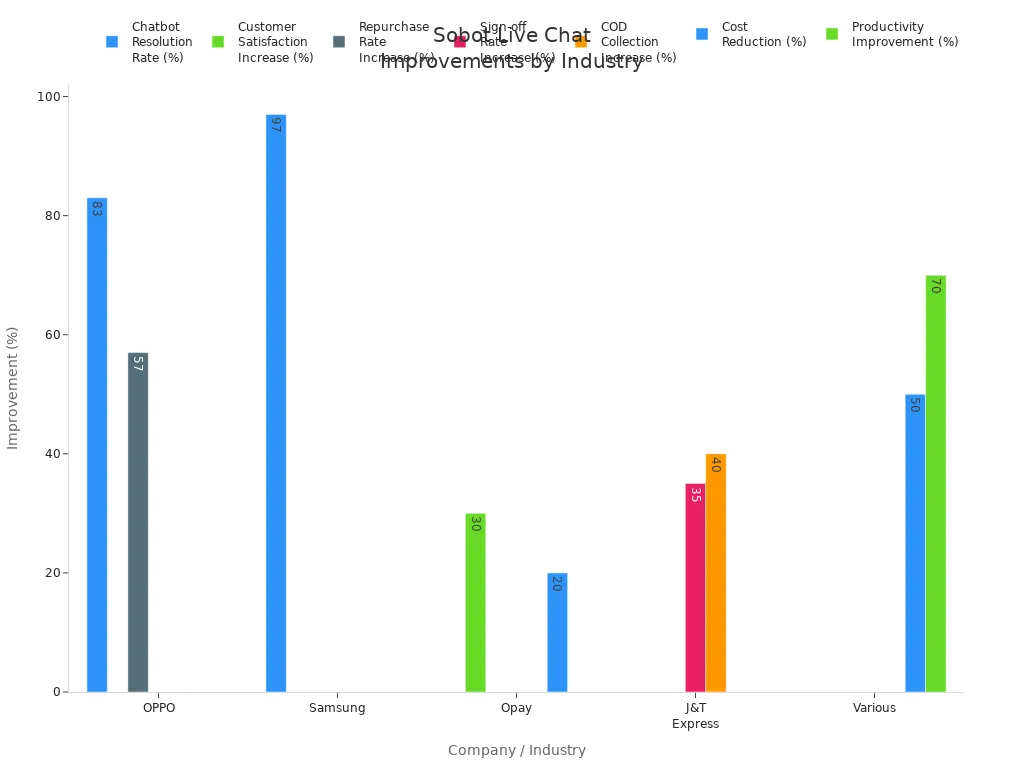
Sobot’s chatbots support many languages and connect with platforms like Amazon, Shopify, and Salesforce. This helps companies serve customers everywhere.
Getting Started with Sobot
Companies can start using Sobot’s chatbots by signing up for a free trial on the Sobot website. Sobot offers easy setup and training for teams. The platform’s chatbots and service tools work together in one place. Sobot’s support team helps companies use chatbots to improve customer service and reach their goals. Many companies choose Sobot for its strong AI, flexible pricing, and proven results.
Industry research shows that chatbots drive higher satisfaction and engagement, helping companies boost customer engagement and loyalty. Businesses see a 20% increase in conversions and a 48% rise in revenue per chat hour after using chatbots. 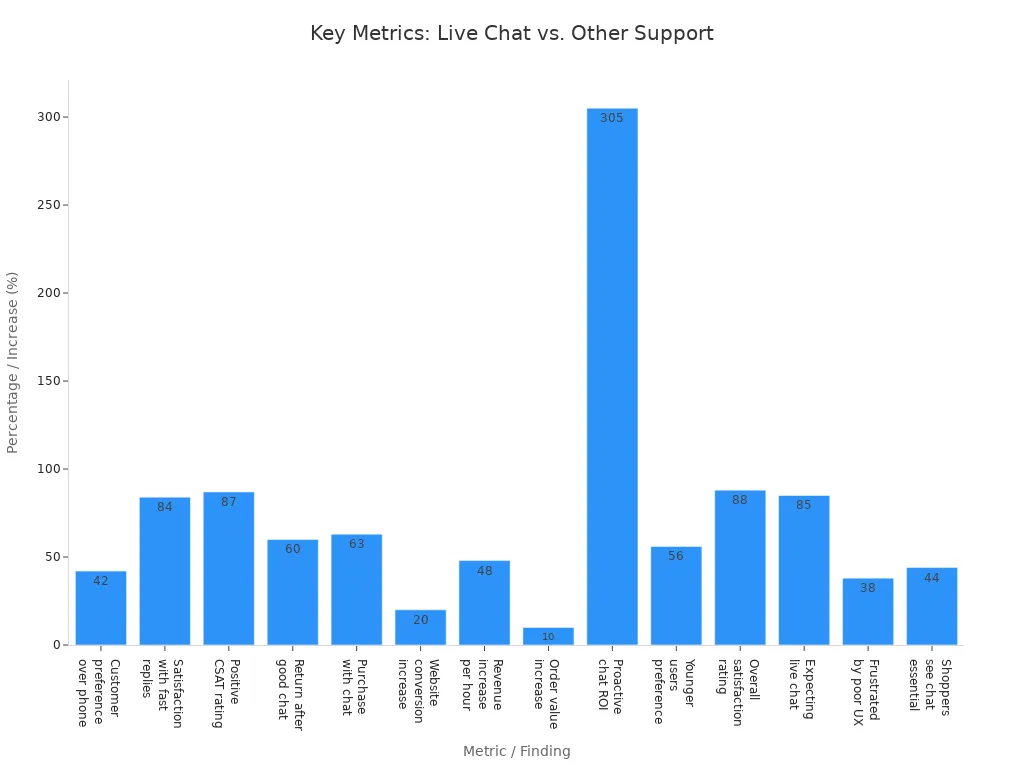
To choose the best tools, companies should analyze customer needs, use multiple channels, and focus on fast engagement. Sobot’s solutions help teams deliver strong engagement and satisfaction across every channel.
FAQ
What makes live chat a top customer tool for businesses?
Live chat gives instant answers. Studies show 73% of customers prefer live chat over email or phone. Sobot Live Chat helps companies boost conversion rates by 38% and keeps all conversations in one place for better service.
How does Sobot Live Chat improve customer satisfaction?
Sobot Live Chat uses AI tools and omnichannel support. Agents see customer history and respond faster. This leads to higher satisfaction scores. For example, OPPO saw a 94% positive feedback rate after using Sobot’s customer tool.
Can live chat handle complex customer issues?
Live chat works best for quick questions. For complex issues, Sobot’s live chat lets agents transfer chats or escalate to phone support. This ensures customers get the right help fast.
Why should companies use multiple customer tools together?
A multi-tool approach covers more needs. Live chat, email, and phone support work together. Sobot’s omnichannel solution lets agents switch channels easily. This reduces wait times by 39% and improves customer satisfaction.
Is Sobot Live Chat easy to set up for different industries?
Yes. Sobot Live Chat supports retail, finance, gaming, and more. Companies can start with a free trial and use built-in analytics to track results. Sobot’s customer tool adapts to many business needs.
See Also
Best Live Chat Platforms Reviewed And Rated For 2024
Why Live Chat Offers More Advantages Than Email Support
Comparing Shopify And Other Leading Live Chat Tools
